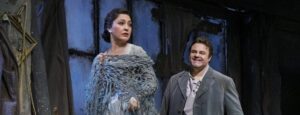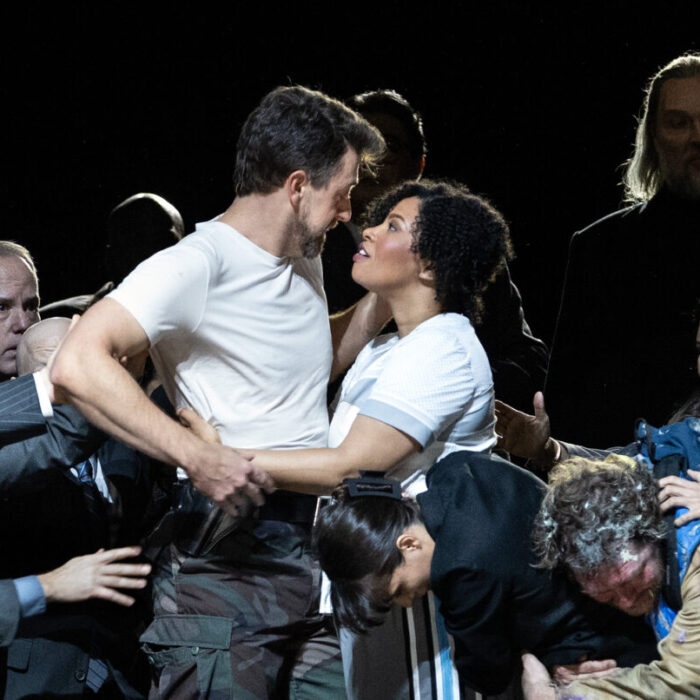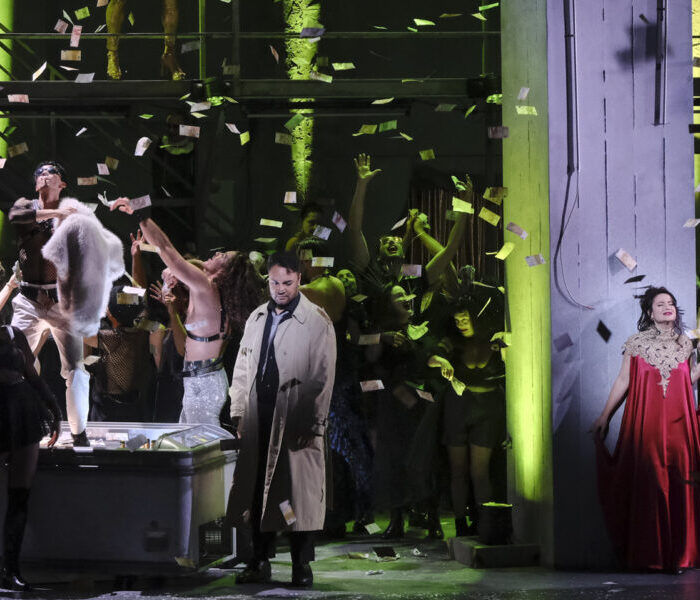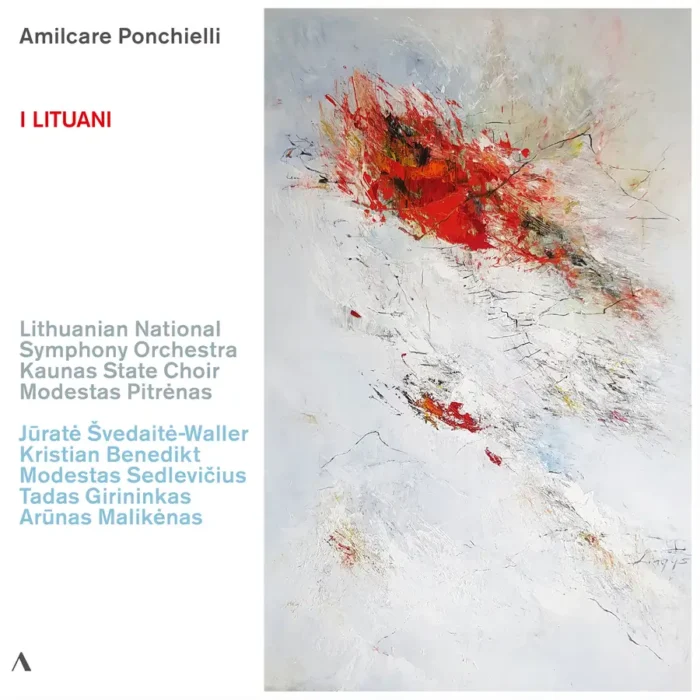
Metropolitan Opera 2024-25 Review: La Boheme
A Solid Cast Revives Franco Zeffirelli’s Classic Production
By Mike HardyOf course, this isn’t a review of the great Metropolitan Opera House, per se, but as a most fortunate and frequent attendee of the Royal Opera House, (now frustratingly called the Royal Ballet and Opera), it proved somewhat impossible for me to make comparisons.
Yes, of COURSE, it IS big; it’s the biggest opera house in the world, as the ebullient and wonderfully helpful front of house staff member was delighted to point out, but is bigger better? Well, I personally wouldn’t want to try and make my vocal efforts heard in all corners here, and I did find myself comparing the plush, bland décor to tired, dull 1970’s British movie theatres; (that’s it……they’re never going to invite me back!), but it IS impressive.
More noticeable was the vast difference in the behavior of the visiting patrons, here to see Puccini’s finest, which included a sizeable gathering of media and theatre students here on opening night. Absolutely devoid of any of the formality or stuffy protocols that the British seem to like to observe, they positively exuded jovial bonhomie on a level that was almost raucous at times. Immediately at the cessation of Act one, during the brief stage set change, where British patrons would merely remain seated, uttering little more than a gentle murmur or whispered commentary; many audience members rise from their seats, turning to speak to their fellow attendees, some moving up and down the aisles and passageways to speak with each other as though it were the interval.
More saliently, during the performance itself, audience members frequently laughed out loud at the most innocuous or mildly witty dialogue, (sometimes when the dialogue WASN’T witty), as though they were at a pantomime; (I appreciate that pantomimes are also almost exclusively a British thing that may require some explanation for those whom we refer to as our ‘Cousins from across the Atlantic’, so as not to further antagonize wonderful American readers, I shall desist from making further comparisons and concentrate solely on the performance!)
Realism at its Finest
This Franco Zeffirelli staging is over 43 years old and is currently the most performed production in Met history, yet I would suggest no matter how many times one is fortunate enough to see it, one could not possibly fail to be in awe of it. It is utterly spectacular and is a resounding triumph in an era where many directors and set designers are apparently opting for minimalism and sensationalist notions. From the simple, yet impactive humble garret staging of the first and final acts, to the astonishing, detailed and rich, super-busy street and ‘Café Momus’ scene of the second act to the, almost, hyper-realistic snow bank, trees and statue of the Barrière d’Enfer of the third, this is a veritable feast for the eyes and a true triumph not only for the late Zeffirelli himself, but also for Associate Designer David Reppa, revival stage director Sara Erde, the Metropolitan Opera Shops for the scenery and properties creations and the Costumes constructed by the Metropolitan Opera Costume Department. Even I almost joined in the universal cheers, whoops, and applause that emanated from the audience when the curtain rose on the second act. This act has a dancing bear, a donkey, and a horse, and only the bear isn’t real! I genuinely cannot recall a more incredible looking opera set.
Delightful Cast
It would be a great shame if such visual splendor was not matched with an equal measure of auditory delight and on this occasion, I am happy to report that it most categorically was. Joseph Calleja has been plagued for some time with chronic Gastroesophageal reflux disease, requiring more than one operation over recent years, but I am delighted to report that he is still a tenor par excellence. His resonant Björling-like vibrato still accents his ‘golden-age’ timbre and mellifluous tones superbly, and he colors his phrases with stunning expressiveness. Moreover, he has acquired a great stage presence and ability to convey greater emotion and impact through his acting, something that was not always evident in his earlier performances. He presented a remarkably youthful Rodolfo here. His keynote “Che Gelida Manina” was accomplished and his final “Amor!” at the end of his “O soave fanciulla” duet, sung in high ‘C’, floated majestically from offstage to all areas of the theatre. For me, his finest work came in the final act, where he sang a sublime and most moving “O Mimì, tu più non torni,” before positively shining in the schoolboy clowning antics with his fellow bohemians and then giving a magnificent, most evocative portrayal of a distraught lover in his interactions with his Mimì, much removed from the over-melodramatic performances these final scenes are frequently portrayed.
His beau, Mimì, was sung here by Russian soprano Kristina Mkhitaryan. She possesses an instrument of some beauty, capable of gorgeous, soft, sweet, caressing lines and explosive escalations of voluminous color. Her “Si. Mi chiamano Mimì” was enchanting and her interactions with Rodolfo were convincing at all times. Her Act one duet was superb. Her “Donde lieta usci,” her farewell lament to Rodolfo was most
evocative and deserving of far greater applause than it received and her final act was most moving where she managed to imbue her utterances with exquisiteness, yet almost tangible frailty.
Luca Micheletti is here as Marcello in his Met debut. The Italian baritone sings with great limpidity. He rendered an emotional-laden final act duet, with Rodolfo, where he sings of his aptly named lost muse, Musetta, after delivering a splendidly aggravated spurned lover in the “Café Momus” scene; his rich, dark, color being most evident in his interactions with Mimì and Rodolfo in the third Act where he acts, in turn, as counsel to both.
His Musetta is American soprano Brittany Renee who positively shines in this role; glorious, confident, and assured in voice, and superbly hammy in her Act two performance. Her “Quando m’en vo” was both seductive and evocative and, along with her frivolous squabbling with
Marcello in the third act, served to contrast deeply with her emotion laden entreaties in the final act.
French bass-baritone Nicolas Testé plays the philosopher, Colline. He delivers a quite splendid, thoughtful “Vecchia Zimarra,” the ‘Coat aria’ where he decides to part with his trusty garment in order to generate funds to buy medicine for the ailing Mimi. His considered and passionate efforts here brought deserved applause for his aria. However, a big contender for second place in the male vocal awards here must go to Gihoon
Kim as Schaunard. Not only does he possess a magnificent, sonorous, full-toned baritonal voice, he is a vibrant, animated character that imbues, virtually, magnetic properties. His antics in the final act where he performs a most comical, but almost passable ballerina entrechat were a joy to behold.
The lighting director is Gil Wechsler, whose superb artistry played a major role in highlighting and accentuating the superb scenery here. Not only that, the use of subtle spots, focusing on key characters when they were not the ones singing, served to maintain their involvement in the tale unfolding, an example being the sorrowful figure of Mimì, in the background of the scene dominated by Rodolfo and Marcello who were discussing her.
The Metropolitan chorus was consummate, not only vocally but also in its acting; not least in the second act where, for a substantial period of time, (and as a touch of directorial brilliance), it had to remain frozen like statues; something that was difficult to perceive where this action began, but which served well to highlight the developing drama in the ‘café Momus’ scene. I have, in previous reviews of “Boheme,” been critical of the inclusion of the marching band scene in the second act, questioning its validity and value but I have to say in this production, it was superb, not only in producing a genuine militarian flavor but being almost unique in that it actually played the brass instruments, rather than relying on miming to the orchestras playing.
Speaking of the orchestra, I have to say they were splendid, but it was most apparent to me that they were frequently out of tempo with the singers at key moments, and I noted that conductor Alexander Soddy appeared to be more occupied in focusing on his orchestra members, only rarely seeming to allude to, or proffer direction to the singing artists.
I started this review with something that some may interpret as denigration of the Metropolitan Opera House, so I shall conclude with a well-deserved plaudit. I would assuredly suggest that you would be hard-pressed to find anything as impressive or spectacular in any opera house, anywhere in the world. And although I was critical of their mild rambunctiousness, I was delighted to see so many young people in the
audience.
There has been much discussion recently, and in the not-too-distant past, among artists and others involved in the production of opera, deliberating the value and worth of modern productions, directions, sets, and themes. Whilst modern takes on old works can have a place
and can serve to contribute something new and fresh, this production here, unquestionably proves the value, beauty, and incomparable majesty inherent in traditional stagings. It really IS a masterpiece.



